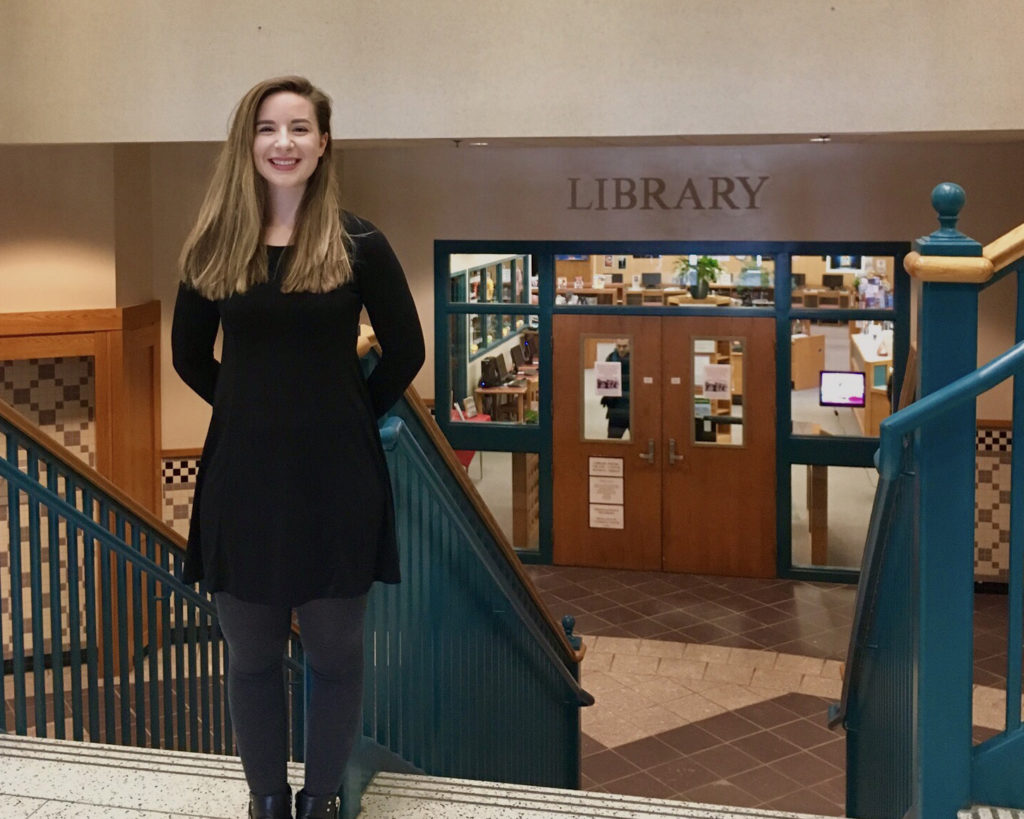An experiment in civics

Who represents your district in the state House of Representatives? Who serves in your local city council? When Mary Sasso ’18 asked high school students these questions, most of them drew a blank.
“They knew the names of the vice president and the state governor, but once they got past the macro concepts, they found it hard to identify answers,” said Sasso, a political science major who serves as president of the Student Government Association.
For her senior thesis, Sasso is testing an innovative civic education curriculum at a high school in Maine to not only narrow these gaps in knowledge—but also pique student interest and engagement in politics.
Sasso originally developed the idea to pursue this research her sophomore year at Wheaton, when she discovered that very few state requirements mandate civics education.
“Social studies is buried in the Common Core standards. The one requirement about civics is that you have to teach civics,” she said.
Last summer, Sasso submitted a proposal to a Maine high school to test a curriculum she developed that takes a new approach to civics education.
Her curriculum tasked students with charting how the government impacts everyday activities in their lives; analyzing an advertisement for an independent candidate running for governor; researching ways to make their voices heard at all stages of government; interpreting policy proposals; and separating real news from fake news, among other assignments.
She identified teachers willing to implement her lesson plans, which she crafted with advisor Assistant Professor of Political Science Bradford Bishop, and received backing from the principal. Her modules are geared toward freshman and sophomore high school students.
“Mary is an unusually bright and ambitious student who has a deep interest in politics. She had a clear idea about the information she wanted to convey to students in her lessons, and a very sophisticated understanding of research design,” Bishop said. “It is a very impressive project for an undergraduate to take on.”
This past fall, two social studies teachers taught Sasso’s curriculum (which entailed nine lessons) to 73 students, while 57 students served as the control group. Sasso’s modules involved information on state and local politics, but she mainly focused them around activities and questions that engage student interest and draw links to their own lives.
“Local politics are really where a lot of decisions are made about peoples’ lives,” Sasso said. “Students should have the skills to be able to participate effectively in their own governance.”
In addition, Sasso’s curriculum exposed students to resources that provide the political platforms of their representatives, as well as information on nonprofit and advocacy groups pushing for policy reform.
“Voting rates among young people are abysmal, and don’t show any signs of getting better,” she said. “My goal was to perk [the students’] ears up, so they would think ‘maybe this is something that affects me,'” she said.
With the fall semester over, Sasso is reviewing and analyzing tests taken before and after the implementation of her curriculum. Using the results of her analysis, she will tweak her curriculum to again test her civics education curriculum in two high school classes in the spring. She will report her final results in her senior honor thesis.
Looking forward, Sasso said she plans to pursue a career in politics. But instead of heading to the nation’s capital, she said, “I’d rather get involved at the local level.”